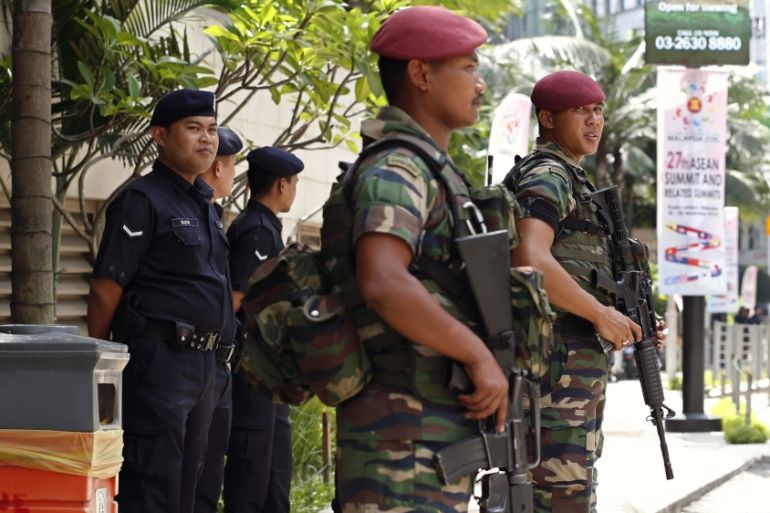Malaysia minister warns tourist areas being targeted
Warning comes after alleged ISIL bomber was arrested and brazen attack in neighbouring Indonesia.

Tourist areas of Malaysia’s main city Kuala Lumpur are being targeted, a senior minister said on Sunday, following the arrest of a bombing suspect and a deadly attack in neighbouring Indonesia last week.
Federal Territories Minister Adnan Mansor said the upscale district of Bangsar and top tourist destination Bukit Bintang, as well as some shopping malls, were among those at risk, although police cast doubt on the warning.
Keep reading
list of 4 itemsMoscow theatre attack suspects show signs of beating in court
Four men showing signs of severe beating charged over Moscow concert attack
Russia mourns Moscow concert hall attack victims as death toll rises to 137
“We are aware of the threats so we are on standby for any possible event,” Adnan said. “We will look into seeking the help of the defence department in order to secure these locations if the need arises.”
The minister did not supply details of any specific threats, and Kuala Lumpur police chief Tajudin Isa assured tourists and the public that the areas he mentioned were safe.
“The security at all public places have been intensified and we are doing all we can to monitor suspicious activities,” he told reporters.
|
|
| Jakarta rattled by bomb and gun attacks |
Tajudin said he was not sure where Adnan received his information.
Malaysian police chief Khalid Abu Bakar on Saturday announced the arrest of a 28-year-old insurance agent suspected of plotting a “lone wolf” attack on an entertainment outlet and a government building.
The suspect, who was arrested on Friday in Kuala Lumpur, allegedly received orders from Islamic State of Iraq and the Levant (ISIL) leaders in Syria to launch the attacks, Khalid said, without providing any details.
Two people were killed and 20 others were wounded after five attackers went on a bombing and shooting rampage in the Indonesian capital Jakarta last week. The five assailants died in the attack claimed by ISIL.
It was the first such attack in the world’s most populous Muslim nation since 2009.